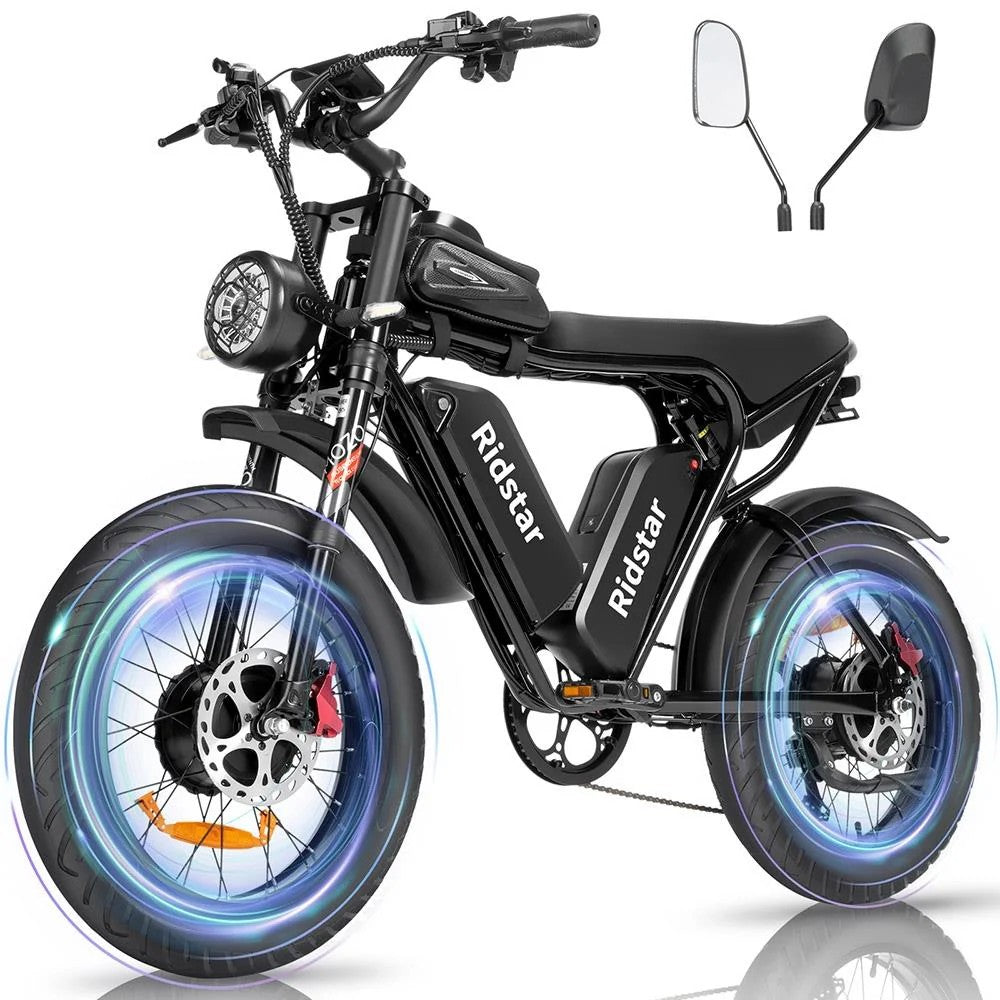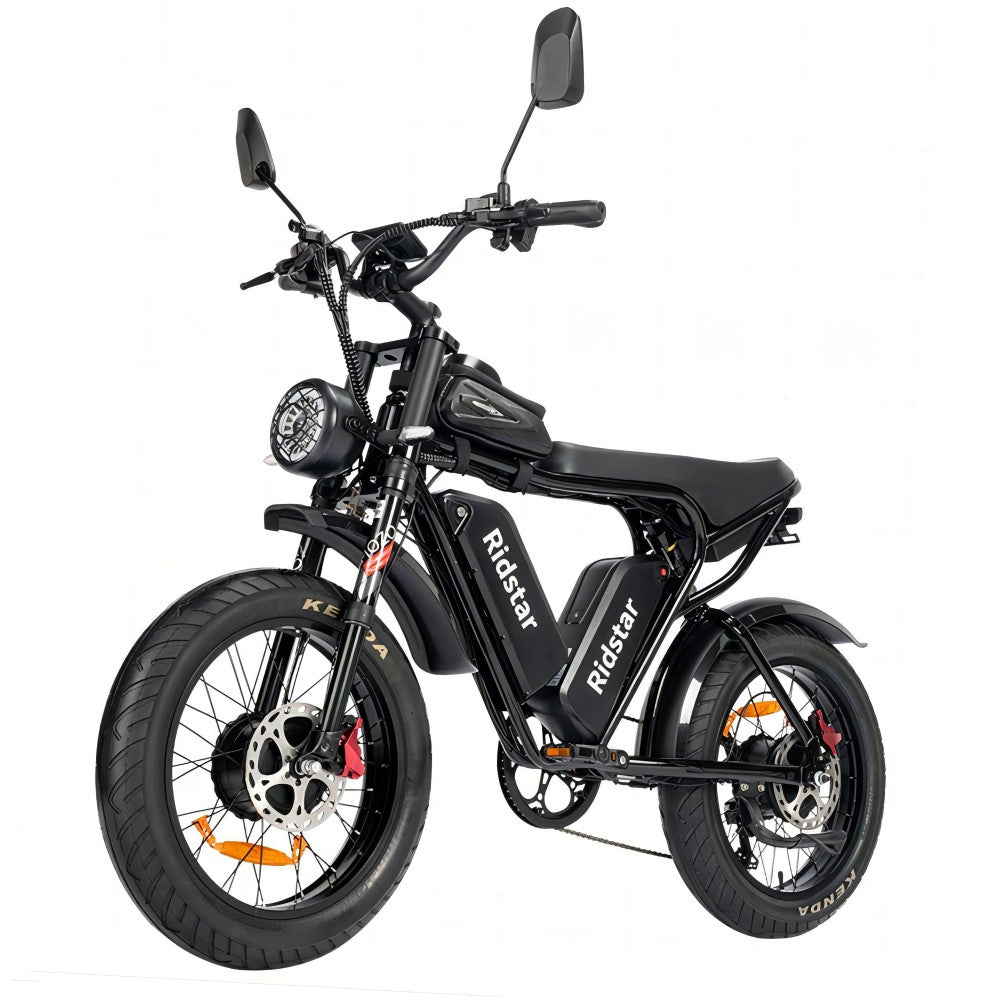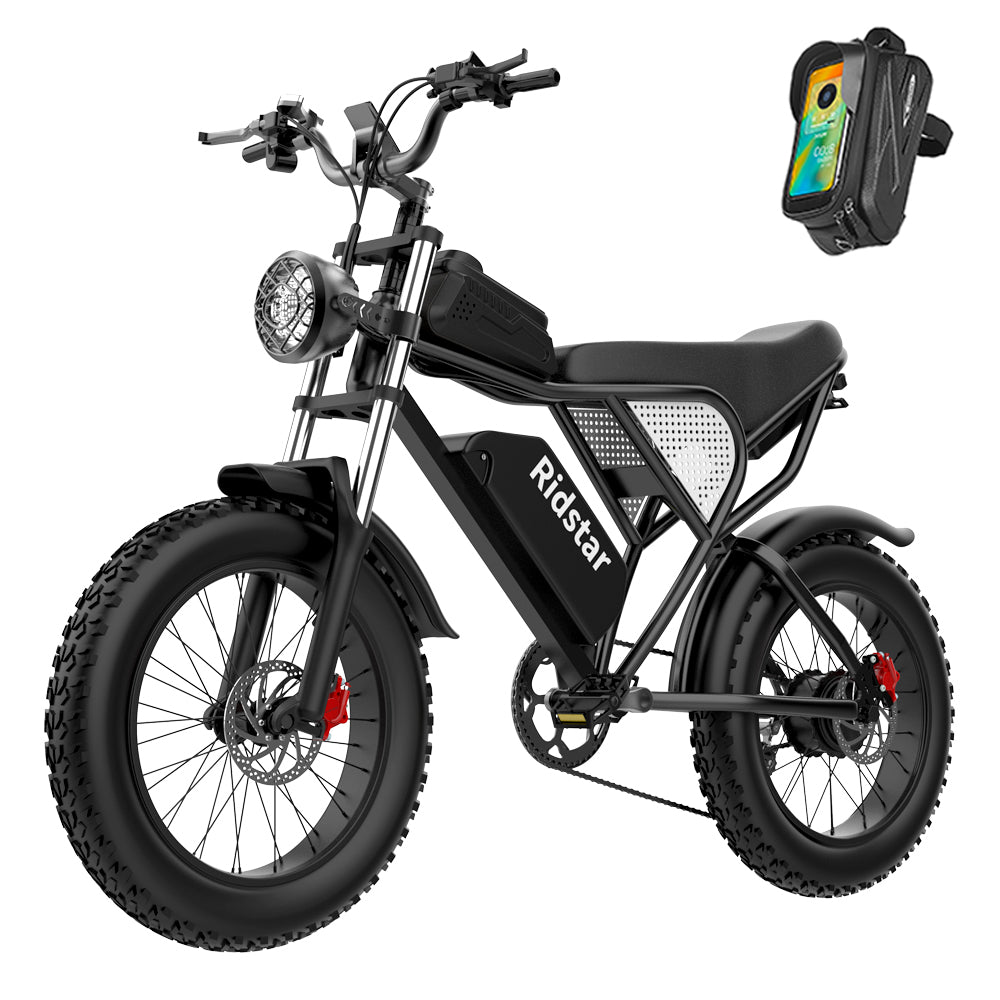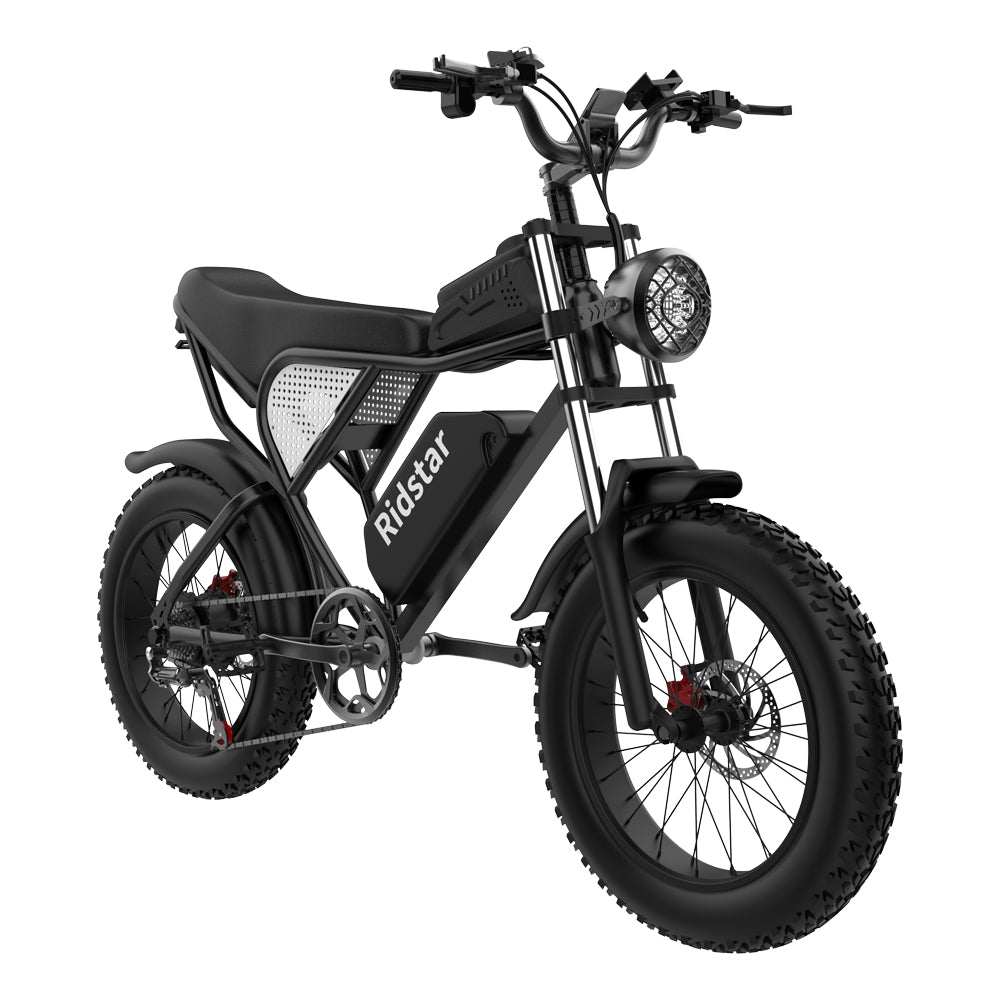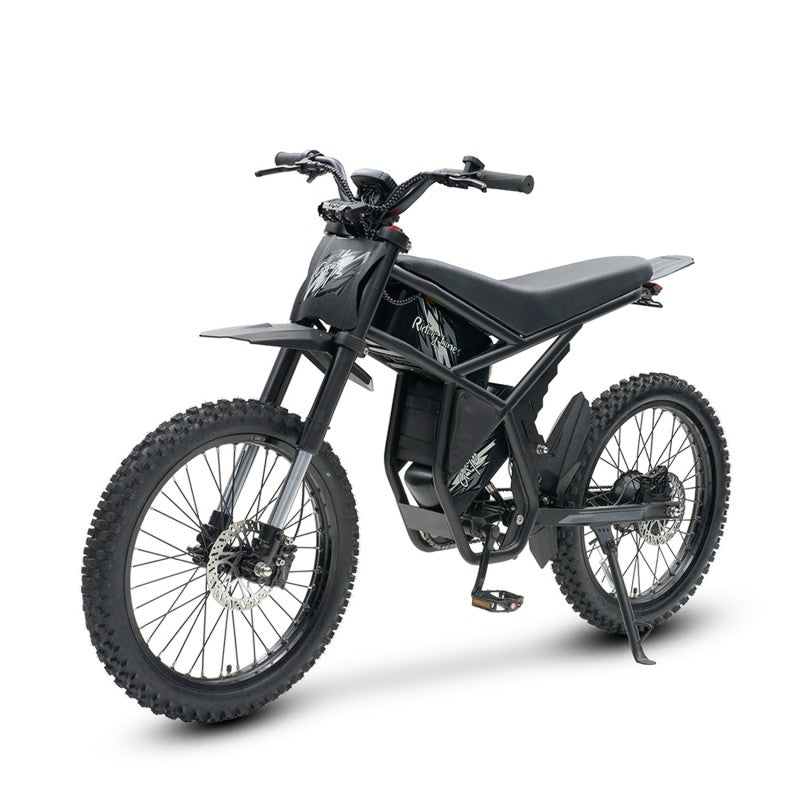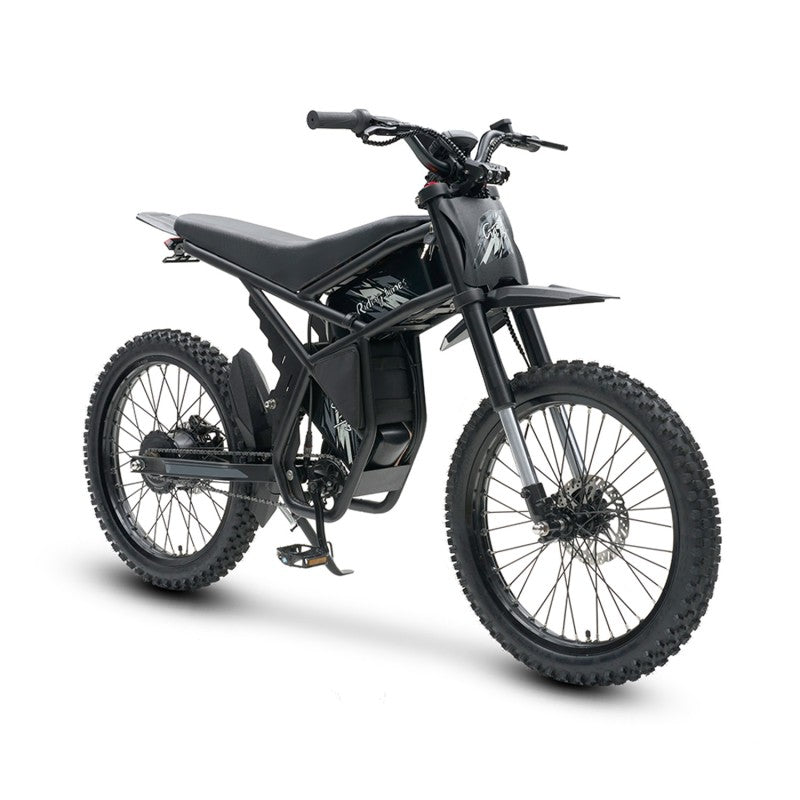1. Power & Range
Both the M300 and M310 share an efficient geared‑hub layout, but they differ slightly:
-
TTGO M300
– Motor: 36 V, 250 W rear‑hub with torque‑sensor assist
– Battery: 36 V, 20 Ah (≈ 720 Wh)
– Top Speed: 25 km/h (unlocked up to 32 km/h)
– Range: Up to 120 km (pedal assist) or 80 km (throttle only)
– Color: Black, Blue -
TTGO M310
– Motor: 48 V, 500 W (peak) rear‑hub with speed‑sensor assist
– Battery: 48 V, 15 Ah (≈ 720 Wh)
– Top Speed: 25 km/h (unlocked up to 32 km/h)
– Range: Around 100 km (pedal assist) or 65 km (throttle only)
– Color: Gray, Green
Takeaway: Despite similar battery watt‑hours, the M300 trades voltage for capacity, giving slightly more range; the M310’s higher voltage yields stronger acceleration.
2. Sensor & Assist Behavior
-
M300 – Torque Sensor
Measures how hard you push the pedals and dynamically matches motor output. Result: seamless, bike‑like feedback and efficient power use, especially on rolling terrain. -
M310 – Speed (Cadence) Sensor
Detects pedal rotation rather than force. Motor kicks in when you pedal, yielding consistent assistance but with a subtle lag and less nuanced control.
Why it matters: Torque sensing feels more natural and can conserve battery on variable routes; speed sensing is simpler and reliable for steady‑pace riding.
3. Ride Comfort & Handling
-
Frame & Fork: Both use a lightweight aluminum alloy frame with a suspension fork and 27.5″×2.1″ Kenda tires, smoothing bumps on city streets or light trails.
-
Weight: M300 ≈ 30 kg (net); M310 ≈ 31.7 kg — the extra heft on the M310 is offset by its stronger motor when climbing or carrying cargo.
4. Drivetrain & Braking
-
Shimano 7‑Speed Gears: Available on both models for efficient shifting across flat and hilly terrain.
-
Mechanical Disc Brakes: Front and rear discs deliver dependable stopping power in wet or dry conditions.
-
Controller & Display: A backlit LCD on each bike shows speed, battery level, distance, and lets you toggle five levels of assist or set cruise control.
5. Load Capacity & Dimensions
-
Max Rider Weight: Both support up to 125 kg.
-
Overall Size: Roughly 182 × 65 × 114 cm; packaged dimensions ~147 × 24.5 × 84 cm for shipping.
-
Cargo Racks & Accessories: Standard rear rack on both; optional fenders, lights, and phone mounts available.
6. Who Should Choose Which?
-
Go for the M300 if…
– You want the longest possible range on mixed‑terrain commutes.
– You value smooth, responsive power delivery tied directly to your pedaling effort.
– Your terrain varies between flats and gentle hills. -
Go for the M310 if…
– You need stronger, more immediate thrust for steep hills or heavier loads.
– You prefer a straightforward assist system that engages reliably with each pedal stroke.
– You’re largely riding urban or suburban roads at a constant pace.
7. Conclusion
Both the TTGO M300 and M310 share robust frames, quality components, and a comfortable ride—yet they cater to slightly different priorities. The M300 excels in efficiency and smooth torque‑based assistance, while the M310 brings extra voltage, power and a simple cadence‑based system that’s perfect for steady urban commuting. Your ideal pick depends on whether you prize nuanced response and maximum range (M300) or raw hill‑climbing muscle and easy‑to‑use assist (M310).
Feel free to ask if you’d like more detail on pricing, accessories, or regional availability!









